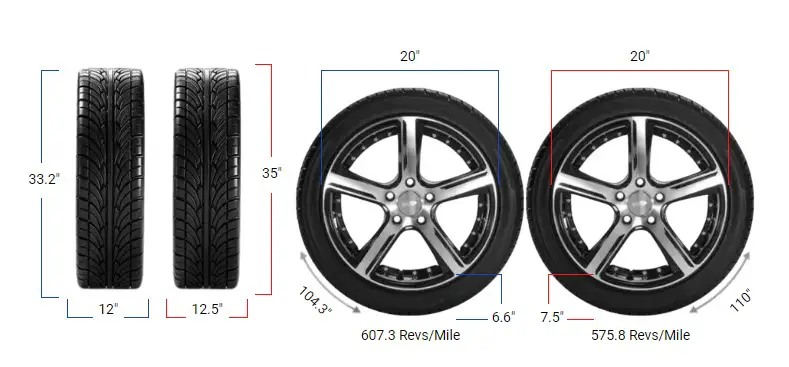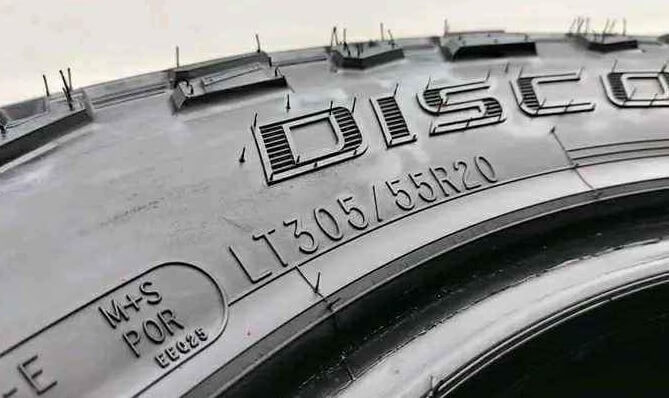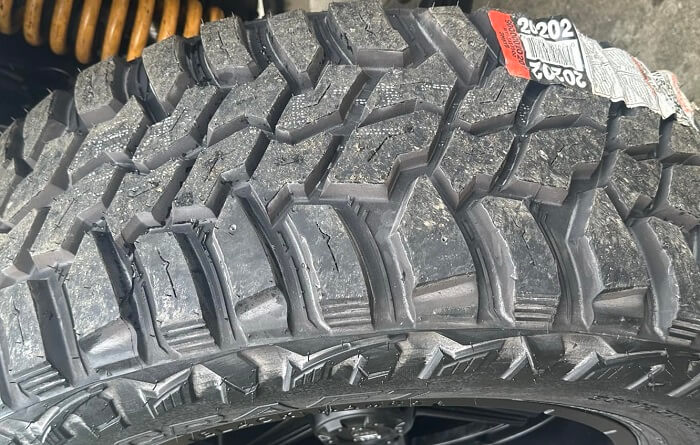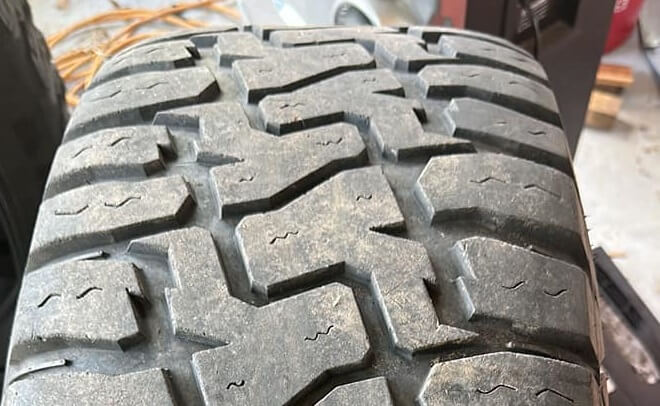Tire Size 305/55r20 vs 35×12.50r20

Tire upgrades can transform your vehicle’s look and performance. The switch from 305/55r20 to 35×12.50r20 is a popular choice for many truck and SUV owners. But before you make the leap, it’s crucial to understand how this change will affect your ride. Here are the top key points of switching from 305/55r20 to 35×12.50r20 tires:
- Increased ground clearance by 0.905 inches improves off-road capability
- Wider tread offers better traction in challenging terrain
- Speedometer will read about 3.3% lower than actual speed
- Fuel efficiency may decrease due to larger tire size
- Vehicle aesthetics change with a more aggressive lifted appearance

Fitment Guide
The 35×12.5R20 tire is 5.5% larger in overall diameter compared to the 305/55R20. This exceeds the 3% diameter difference limit for direct replacement without modifications.
Installing 35×12.5R20 tires on a vehicle originally equipped with 305/55R20 requires a suspension lift kit to prevent rubbing and other fitment issues.
On-Road Impact
Changing to a larger tire size can significantly affect your vehicle’s on-road performance. Here’s how the switch to 35×12.50r20 might impact your daily driving:
- Gas Mileage: The larger, heavier tires may slightly reduce your fuel efficiency. The 5.5% increase in diameter means your engine has to work harder to turn the wheels, potentially lowering your miles per gallon.
- Ride Comfort: You might notice a change in ride quality. The taller sidewall (13.7% increase) could provide better cushioning over bumps, but the wider tread may also increase road noise.
- Speedometer Accuracy: Your speedometer will now read lower than your actual speed. At a displayed speed of 20 mph, you’ll actually be traveling at 20.66 mph. This discrepancy increases at higher speeds and could lead to unintended speeding.
- Acceleration and Braking: The larger tires have more rotational mass, which may result in slightly slower acceleration and longer braking distances.
- Handling: The wider tread (4.3% increase) could improve cornering grip on dry pavement, but may also make the steering feel heavier.

Off-Road Impact
For off-road enthusiasts, the switch to 35×12.50r20 tires can bring some exciting benefits, but also a few challenges to consider:
- Ground Clearance: The larger diameter provides an extra 0.905 inches (23 mm) of ground clearance. This improvement can be significant when navigating obstacles on trails.
- Traction: The wider tread offers more surface area for grip in mud, sand, and loose terrain. This can enhance your vehicle’s off-road capabilities.
- Flotation: The increased width helps distribute the vehicle’s weight over a larger area, which is beneficial in soft conditions like sand or snow.
- Rock Crawling: The taller sidewall provides more cushioning and protection against sharp rocks, potentially reducing the risk of punctures.
- Wheel Travel: The larger diameter may slightly reduce wheel travel, affecting articulation in extreme off-road situations.
Aesthetics & Durability
- Aesthetics Look: The larger 35×12.50r20 tires will give your vehicle a more aggressive, lifted appearance. This can be especially appealing for truck and SUV owners looking for a bolder stance.
- Durability & Wear: The increased sidewall height (13.7% taller) may offer better protection against impacts and sidewall damage. However, the wider tread may wear unevenly if not properly aligned and rotated regularly.

What is the Difference Between 305/55r20 and 35×12.5r20?
The main difference between 305/55r20 and 35×12.5r20 tires is their overall diameter. The 35×12.5r20 tire has a diameter of 35.02 inches, while the 305/55r20 tire has a diameter of 33.21 inches.
This results in a significant difference of 1.81 inches or 46.1 mm, which represents a 5.5% increase in size. This diameter difference affects various aspects of the vehicle’s performance, including ground clearance, speedometer accuracy, and potentially fuel efficiency.
Can I Use 35×12.5r20 Instead of 305/55r20?
No, it is not recommended to use 35×12.5r20 tires instead of 305/55r20 without making additional vehicle modifications. The 5.5% increase in diameter exceeds the typically recommended 3% limit for tire size changes.
This difference can potentially affect vehicle handling, speedometer accuracy, and overall performance. If you still want to make this change, you may need to make adaptations to your vehicle to prevent issues such as rubbing or clearance problems.

How Much Wider is a 35×12.5r20 Tire Than a 305/55r20?
A 35×12.5r20 tire is 0.51 inches (13 mm) wider than a 305/55r20 tire. The 35×12.5r20 has a width of 12.52 inches, while the 305/55r20 has a width of 12.01 inches. This represents a 4.3% increase in width.
How Much Taller Is a 35×12.5r20 Tire Than a 305/55r20?
A 35×12.5r20 tire is 1.81 inches (46.1 mm) taller than a 305/55r20 tire. The 35×12.5r20 has an overall diameter of 35.02 inches, while the 305/55r20 has a diameter of 33.21 inches. This represents a 5.5% increase in height.
Our Observation
Switching from 305/55r20 to 35×12.50r20 tires offers notable benefits for off-road performance and aesthetics. The increased ground clearance and wider tread can enhance capabilities in challenging terrain.
However, this change comes with trade-offs. On-road, you may experience reduced fuel efficiency and speedometer inaccuracy. The 5.5% size increase exceeds recommended limits, potentially affecting vehicle systems and handling.
For daily driving, the impact on gas mileage and speedometer readings may be noticeable but not drastic. Off-road, the improvements in traction and ground clearance could be significant for enthusiasts.
Ultimately, this upgrade is best suited for those prioritizing off-road performance and willing to address potential on-road compromises.

Meet Caitlin McCormack, a Tire Size Expert and Blogger Passionate About Everything Related to Tires. With Years of Experience in the Tire Industry, Caitlin Has Become an Expert in Tire Sizes and Their Impact on Vehicle Performance.
